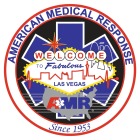
Sep 10, 2014
For today’s post I was going to share my thoughts about the ongoing fight between American Medical Response and the Las Vegas Fire Department. Some might say that with the Las Vegas City Council’s approval of the 5 year contract between the two, the “fight” was resolved. Then, I read the editorial by Glenn Cook that I am going to share below. There are certainly some alarming constraints that any ambulance provider opting into this deal will have to deal with, including what some may consider a gag order when it comes to speaking with the media. What could Las Vegas Fire and their chief William McDonald be so afraid of that would make them add this stipulation to the contract? Ultimately, AMR did what they had to in order to keep their doors open for their 450 employees and their company. I still feel that this move is more about generating income for the city and the fire department. I have plenty more that I could say about this but I will defer today’s post to Glenn Cook and his editorial titled “City to AMR: Shut up and drive.” This is what defeat looks like. This is what happens when a business, trampled by government yet still dependent on government approval to operate, dares to defend itself and alert the taxpaying public to obvious wrongs. This is what happens when city functionaries decide to expand their empire, regardless of cost, regardless of harm. Wednesday’s Las Vegas City Council meeting was all about a proposed downtown soccer stadium. But amid the sports circus, the council presided over another significant action, one that officially killed the city’s dual-response medical transport system. Private ambulance business American Medical Response fought the Fire Department, and the Fire Department won. Earlier this year, Fire Chief Willie McDonald put his boot on the neck of AMR, which had been paying Las Vegas nearly $400,000 per year to handle most patient transports within city limits. He ordered his paramedic units to drive more patients to hospitals, so that the city could boost its bleeding general fund with transport fees. McDonald also cut off AMR from emergency communications and put...






